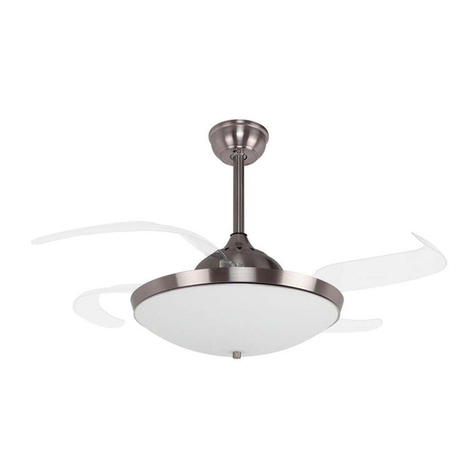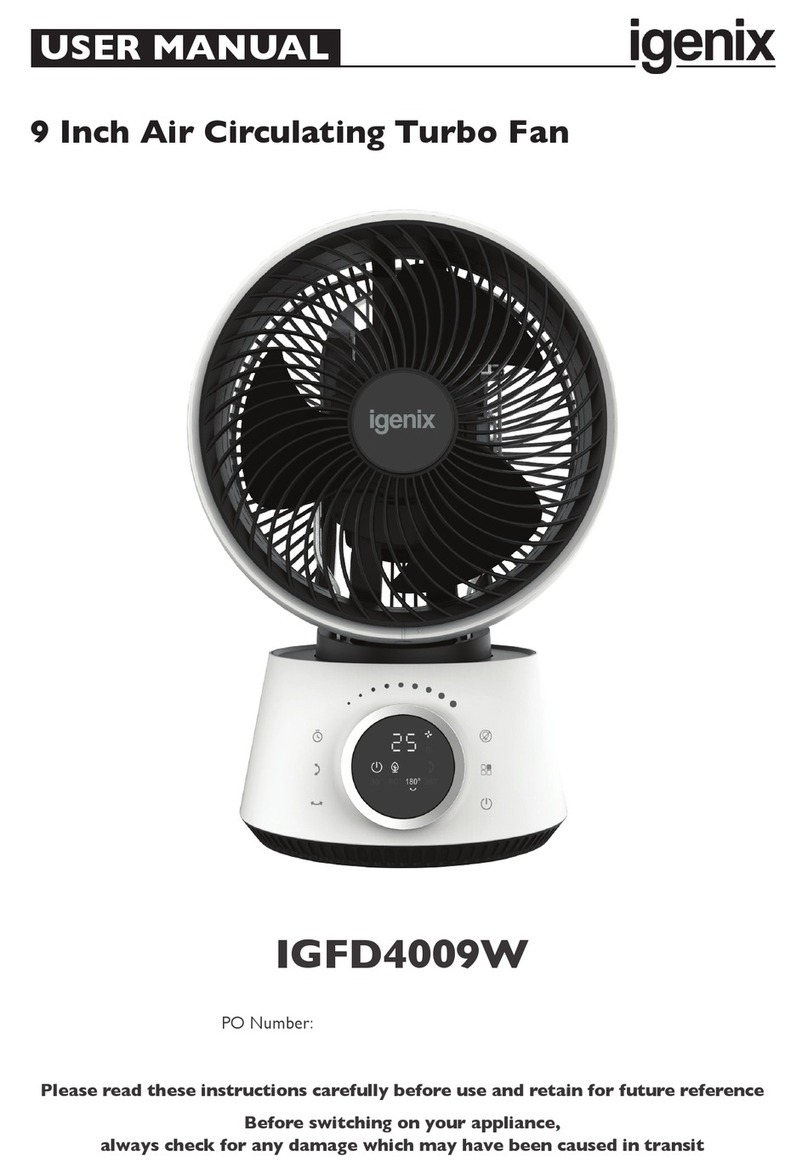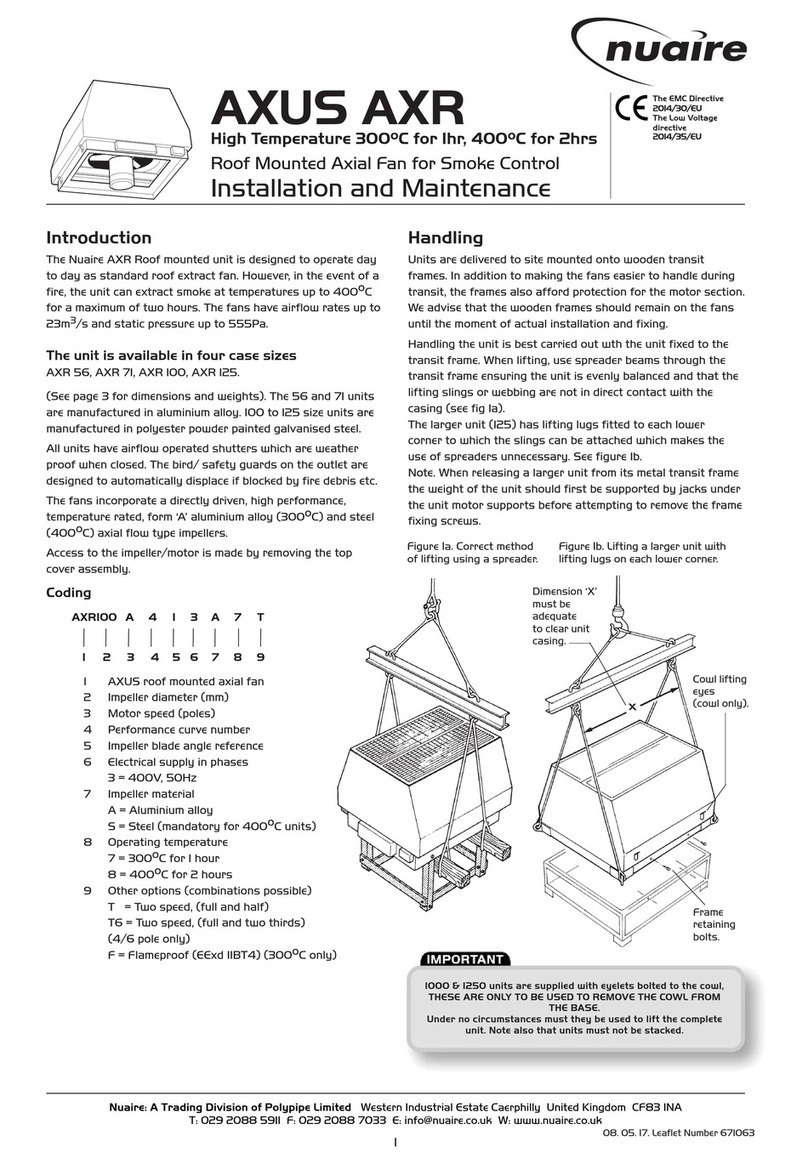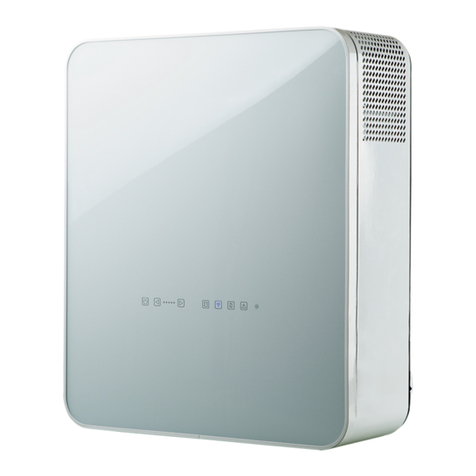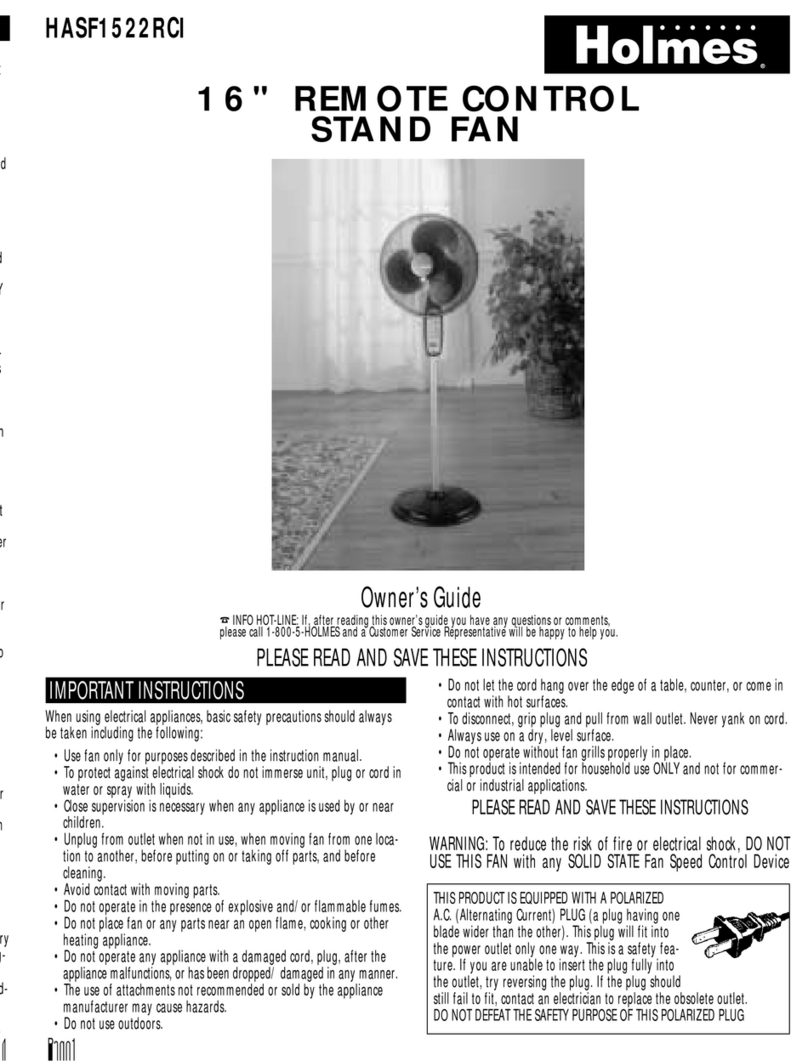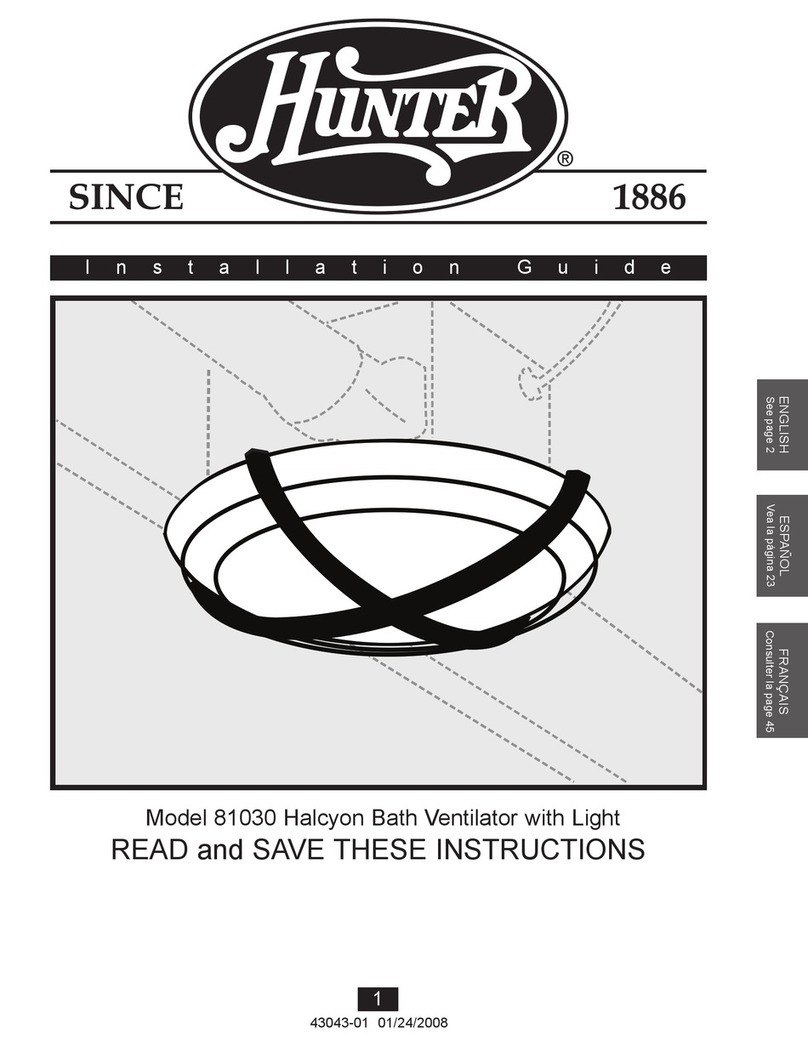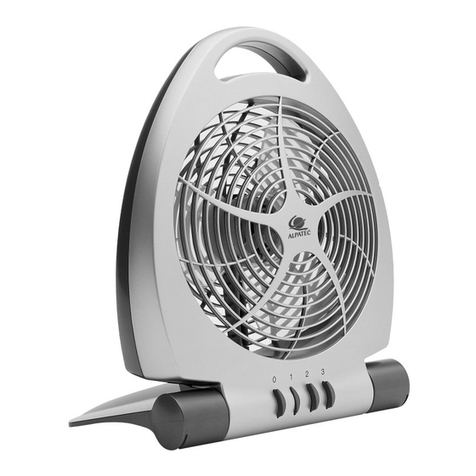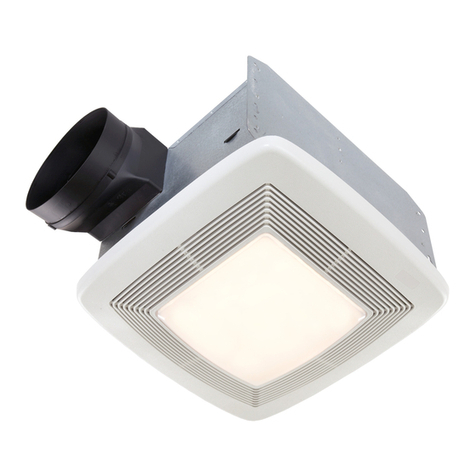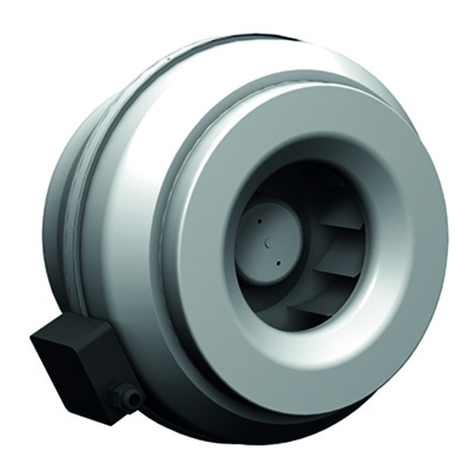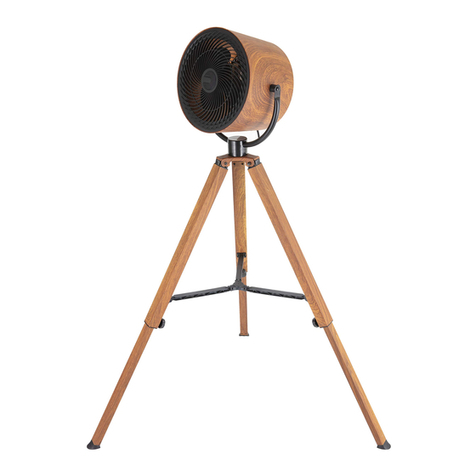GEKKO GeVentor GEV019-100 User manual

Gekko Medical Pty Ltd
GeVentor Ventilator
GEV019-100
Instructions for Use

Instructions for Use: GEV019-100
Page 2
NOTE:

Instructions for Use: GEV019-100
Page 3
Table of Contents
1Introduction........................................................................................................................................................................ 5
2Labels ................................................................................................................................................................................. 6
3Safety Instructions.............................................................................................................................................................. 8
3.1 Safety Symbols .................................................................................................................................................................... 8
3.2 Warnings and Contraindications......................................................................................................................................... 8
4System Overview.............................................................................................................................................................. 11
4.1 Operating Concept ............................................................................................................................................................ 11
4.2 Device Description............................................................................................................................................................. 13
4.3 Single Use Components..................................................................................................................................................... 15
4.4 Patient Breathing Circuit ................................................................................................................................................... 16
4.5 Power Supply..................................................................................................................................................................... 16
4.6 Gas Connections................................................................................................................................................................ 17
5User Interface................................................................................................................................................................... 19
5.1 Gas Control Knobs ............................................................................................................................................................. 19
5.2 Human Machine Interface (HMI) ...................................................................................................................................... 20
6Operating Instructions...................................................................................................................................................... 27
6.1 Installation ........................................................................................................................................................................ 27
6.2 Pre-Start Checks and Instructions ..................................................................................................................................... 29
6.3 Default Settings................................................................................................................................................................. 29
6.4 Quick Start......................................................................................................................................................................... 30
6.5 Start Up ............................................................................................................................................................................. 30
6.6 Volume Controlled Ventilation (VCV) ................................................................................................................................ 32
6.7 Pressure Controlled Ventilation (PCV)............................................................................................................................... 34
6.8 Respiratory Rate and I:E Ratio Setting .............................................................................................................................. 35
6.9 FiO2Mixture Setting .......................................................................................................................................................... 36
6.10 Gas Flowrate Control (Slope) ............................................................................................................................................ 36
6.11 Suctioning.......................................................................................................................................................................... 37
6.12 Continuous Positive Airway Pressure (CPAP) .................................................................................................................... 38
6.13 PEEP Setting ...................................................................................................................................................................... 38
6.14 Alarms and Faults ............................................................................................................................................................. 39
6.15 Stopping Ventilation.......................................................................................................................................................... 42
6.16 Stand-by / Off-State Mode................................................................................................................................................ 42
6.17 Shutdown .......................................................................................................................................................................... 42
6.18 Unscheduled Stops ............................................................................................................................................................ 43
6.19 Battery Life Indicator......................................................................................................................................................... 44
6.20 Connecting Other Devices ................................................................................................................................................. 45
7Storage and Handling........................................................................................................................................................ 47
7.1 Packaging.......................................................................................................................................................................... 47
7.2 Short Term Storage ........................................................................................................................................................... 47
7.3 Long Term Storage ............................................................................................................................................................ 48
7.4 End of Product Life ............................................................................................................................................................ 48
8Cleaning and Maintenance ............................................................................................................................................... 49
8.1 Cleaning Procedure ........................................................................................................................................................... 49
8.2 Cleaning Agents and Disinfectants.................................................................................................................................... 50
8.3 Maintenance Schedule...................................................................................................................................................... 50
8.4 Maintenance Procedures .................................................................................................................................................. 51
8.5 Calibration......................................................................................................................................................................... 52
9Troubleshooting ............................................................................................................................................................... 53
10 Specifications and Performance........................................................................................................................................ 55

Instructions for Use: GEV019-100
Page 4
10.1 Technical Specifications .................................................................................................................................................... 55
10.2 Electrical Classifications .................................................................................................................................................... 56
10.3 Ventilator Accuracy Testing .............................................................................................................................................. 57
11 Accessories, Spare Parts and Consumables....................................................................................................................... 59
12 Additional Service, Maintenance and Warnings................................................................................................................ 60
13 Warranty and Manufacturer Contacts .............................................................................................................................. 61
14 Glossary of Terms ............................................................................................................................................................. 62
Revision Table:
Revision
Modification / Change / Update
By
Date
0
Initial release for GEV019-60
M Ntombela
24/06/2020
1
Updates per TGA exemption requirements
M Ntombela
10/07/2020
2
Updates per TGA exemption requirements; general improvements; design update for
GEV019-100
M Ntombela
05/08/2020
3
Section 10.4 and Section 10.5 removed
Technical Specifications updated for voltage and frequency range (Section 10)
Update Section 11 update for GEV single use text to include “intended” and Section 4.6
remove re-use note
Remove “including oxygen sensor” on Section 8.5 Calibration
Replace “Intensive Care Unit” with “emergency” on Intended Use section on page 5
Include tidal volume range in Section 6.6 and replace 800 ml with 1,500 ml on “Intended
Patient Population”
Section 4.5 updated 24 VDC to 30 VDC
Section 3.2 Electromagnetic Compatibility updated as per compliant EMC tests
Section 10.1 included update to compliance standard for EMC requirements
Section 4.4 sentence to refer to Section 11 for breathing circuit components
Section 11 details table for breathing circuit components
Section 10.3 updated to add breathing circuit components used for ventilator accuracy
testing
M Ntombela
18/08/2020
4
Section updated, 10.1 Technical Specifications
S Baker
24/08/2020
5
Section 6.17 updated with two HMI pages upon switching off/shutdown with options for
user to go to battery mode or not.
M Ntombela
14/09/2020
6
Labels in Section 2 Updated (first three labels –Front, Patient Circuit and Warning)
M Ntombela
05/10/2020
7
Removed details relating to COVID-19 usage and updated intended use.
S Baird
12/03/2021
8
Added Service and Additional Warnings Section
S Baird
17/05/2021

Instructions for Use: GEV019-100
Page 5
1Introduction
Name of Device: GeVentor
Model: GEV019-100
Manufacturer: Gekko Medical Pty Ltd
323 Learmonth Road
Ballarat
VIC
Australia
3350
IFU Document Overview: This Instructions for Use (IFU) document contains important information for the installation,
operation and maintenance of GeVentor GEV019-100 intended for use in clinical intensive care
settings. Please read and understand its contents before installation and operation.
Product Misuse: Gekko Medical Pty Ltd manufactures products to required standards and genuine parts have been
designed and tested to ensure continued product quality and performance in use. The failure to
properly select, install, or use authorised Gekko parts and accessories may adversely affect the
performance and safety features of this product. Furthermore, any modification of Gekko’s
products, removal of original components, or use of the product other than for its intended
purpose or not in accordance with this IFU document may impair the safety and performance of
these products in use. These actions or failures are regarded as product misuse which are not
covered under Gekko’s warranty.
Intended Use: The GeVentor is intended to provide continuous or intermittent ventilatory support to individuals
who require mechanical ventilation. The GeVentor is intended to be used by qualified, trained
personnel under the direction of a physician. Specifically, the GeVentor is applicable for treating
adult patients.
Intended Patient Population: The intended adult patient population who require pressure-based or volume-based continuous
respiratory support with tidal volumes with accurate control of these pressures from 5 - 50 cmH2O
and tidal volumes 200 –1,500 ml.
Environment of Use: The device is intended for use in hospitals and hospital-type facilities, which provide respiratory
care for patients requiring respiratory support. The device may be used for intra-hospital transport
within a hospital or hospital-type facility. The device is intended for transport between hospitals
or hospital-type facilities. The device is not to be used in the presence of
flammable anaesthetics. The device is intended for sale by or on the order of a physician only. The
device is intended for operation by trained and qualified personnel.

Instructions for Use: GEV019-100
Page 6
2Labels
Front:
The front labels of the GeVentor areas per the label given below.
Patient circuit:
On the side of the GeVentor, where the patient breathing circuit is connected, the label below is available.

Instructions for Use: GEV019-100
Page 7
Warning:
On the rear of the GeVentor, the label below is available.

Instructions for Use: GEV019-100
Page 8
3Safety Instructions
It is a requirement of owners and users of the GeVentor to develop safe work procedures for the operation of their equipment.
Owners should carry out appropriate risk assessments to establish safe work practices for activities associated with the GeVentor
under the owner’s control.
3.1 Safety Symbols
Four levels of reader alert may be utilised within this manual and appear in full-width boxes. Non-observation of reader alerts can
cause hazards.
DANGER
Indicates a hazardous situation, which if not
avoided, will result in death or serious injury.
WARNING
Indicates a hazardous situation, for example,
information about dangerous voltages or actions
that could result in bodily harm or injury
CAUTION
Failure to heed CAUTION alerts can result in
moderate or minor injury, damage to the device or
associated equipment
NOTE
Provided to assist and guide personnel with helpful
additional information.
3.2 Warnings and Contraindications
Device Use:
The use of the GeVentor requires comprehensive understanding of the GeVentor as per this IFU document. The GeVentor must
be used for its intended use only and in the environment as stated in Section 1. Failure to adhere to the instructions statements
constitutes inconsistent use of the GeVentor as per its intended use.
Maintenance:
The GeVentor must be inspected and maintained regularly as detailed in Section 8 (Maintenance and Cleaning) of this IFU
document. It is recommended that servicing be performed by qualified service personnel. Gekko Medical Pty Ltd recommends a
service contract is agreed upon, and that all parts used are genuine parts supplied by the manufacturer.

Instructions for Use: GEV019-100
Page 9
Connection to Electrical Supply Power:
DANGER
Risk of electrical shock. Device to be connected to
earthed mains power outlet only. Before operating
the GeVentor, adhere to instructions provided in
Section 6 of this document.
DANGER
Risk of electrical shock. Device to be connected to
earthed mains power outlet only. Before operating
the GeVentor, adhere to instructions provided in
Section 6 of this document.
Explosion Hazard:
DANGER
Risk of explosion. Do not allow oxygen supply
components to come into contact with elements
(such as fuels, heat, oils) that may result in
combustible or explosive gas mixtures.
Device Connection:
CAUTION
This device should only be connected to a pipeline
installation designed using a diversity factor that
allows for the indicated high flow at a specified
number of terminal outlets, to avoid exceeding the
flow. This will minimise the risk that the GeVentor
interferes with the operation of adjacent equipment.
Ensure that manual back-up ventilation is available.
Electromagnetic Compatibility:
CAUTION
This device has been tested for EMC and is compliant
with the requirements of IEC 60601-1-2: 2014
Keep away from possible sources of electromagnetic
emissions.

Instructions for Use: GEV019-100
Page 10
Interactions with Other Devices:
CAUTION
Other devices that may be connected to the GeVentor
must comply with approved design, installation and
operation requirements for use with the GeVentor. If
in doubt, contact the manufacturer. Refer to Section
6.20 for more detail.
Alterations to Breathing System:
WARNING
Alterations to the breathing system may affect
ventilator accuracy and patients must be
monitored closely. This includes the use of
humidifiers.
Patient Precautions and Safety:
Always check unit operation with a bag/test lung before connecting to the patient to ensure correct settings have been made and
the unit is delivering as prescribed.
CAUTION
When connected to the patient and operating,
healthcare professionals must ensure that no water
or fluids are allowed to ingress into the device.
Remove all potential hazards in close proximity to the
patient and GeVentor. Ensure that the patient is
suitably monitored to provide appropriate GeVentor
performance and the condition of the patient.
Refer to the relevant section of this document for more detail on the required subject to better understand the safety aspects of
the GeVentor.

Instructions for Use: GEV019-100
Page 11
4System Overview
4.1 Operating Concept
In principle, the operation of the lung comprises the Inspiration and Expiration of air from the lungs. To achieve the best outcome
for the patient it is necessary to break down the operation into the component functions. Refer to the Process Flow Diagram for
reference as per the description below.
The GeVentor is designed to initialize the inspiration phase through the variable timer #1 (T1) which drives a solenoid valve that
in turn allows pressure regulated oxygen to activate the main Expiration Valve (V1), located at the left-hand side of the GeVentor.
This valve holds the pressure in the lungs and pressure transmitter (Pt1) ensures this pressure is achieved and maintained. The
Gas Inflow Valve (V2) is simultaneously activated which allows pressure and flow volume (Tidal Volume - Vt) of gas to be controlled
into the lungs. Typical time values of 0.5 to 2 seconds.
T1 times out and V2 closes and stops the flow of gas to the lungs. V1 stays activated and continues to hold pressure in the lungs
for the hold period (T2). Typical time (variable by the CPM controller) is in the range 0.1 –3.0 seconds. The hold time is not included
in the default settings. Inspiration time is set to 1 second and the I:E ratio is set at 1:2.5.
T2 times out and deactivates V1, T3 activates, and times the expiration phase, the gas is released from the lung to flow back
through the mechanical PEEP which ensures PEEP (positive end expiratory pressure) pressure does not drop below the set pressure
prescribed and set on the PEEP valve.
Ventilation Modes:
Volume Controlled Ventilation (VCV)
Pressure Controlled Ventilation (PCV)
To facilitate patient ventilation and oxygenation, operators of the GeVentor can simply add the height and sex of the patient to
the unit settings and the unit will automatically calculate the default settings for Vti. RR and I:E are default and flow rate and FiO2
are set manually.
This is called the Quick Start Mode (QSM)
•Volume Controlled Ventilation and Pressure Controlled Ventilation modes provided by this ventilator are mandatory
and intermittent
•Volume Controlled Ventilation
•Pressure Controlled Ventilation
•Pressure Controlled / Hold
•Suctioning
•CPAP
The GeVentor can always remain pressurised. The pressure is maintained by the PEEP (Positive End Expiratory Pressure). PEEP is
set and adjusted by the operator on the right-hand side of the unit. The PEEP valve is a manual setting. If PEEP is not required, the
PEEP valve is simply removed from the unit.
For airway pressure safety, mechanical failsafe valves are incorporated into the GeVentor design.
A mechanical pressure relief valve (PRV) is located on the main manifold of the unit preventing over-pressure events from being
generated by the high-pressure delivery unit. Electronic pressure sensing on the patient circuit allows instant actuation of pressure
relief through the GeVentor Expiration valve.

Instructions for Use: GEV019-100
Page 12
Process Flow Diagram:
R1 = Oxygen regulator 1, controls the pressure of the GeVentor Expiration Valve (GEV) which maintains pressure in the patient
circuit above PEEP pressure.
R2 = Oxygen supply regulator 2, controls Inspiration pressure to the FiO2mixing valve. Ensures oxygen pressure is maintained at
350 kPa for equal mixing of the gas.
R3 = Air supply regulator 3, controls Inspiration pressure to the FiO2mixing valve. Ensures air pressure is maintained at 350 kPa
for equal mixing of the gas.
R4 = Mixed gas pressure control to the 2 mm orifice to achieve flow (minute flow) control of the inspiration cycle.
V1 = Open/closed control of gas flow/pressure to the GEV.
V2 = open/closed control to the inspiration gas flow through to the built-in 2 mm orifice feeding the manifold
V3 = FiO2mixing valve takes 350 kPa pressure from R2 and R3 and mixes it to any desired ratio from 21% oxygen (100% air) up to
100% oxygen
V4/V5 = Non return valves ensure no mixing of gases can occur in the system and no contamination can occur in the hospital
gas delivery system. Without these valves, backflow occurs in the regulators and it is not possible to set them up to
equal pressures.
V6 = Pressure relief valve (PRV) for main emergency pressure relief. Controls over-pressure from being generated at the
inspiration source.
PT1 = Pressure transducer on the GeVentor for feedback to control system to ensure proper valve operation.
PT2 = Pressure transducer for flow control of the inspiration phase. Pressure from this transmitter X time = inspiration Vti. Feedback
for system pressure and flow rate control valve setting.
PT3 = Gauge pressure for the manifold/ patient circuit pressure control.
PT4 = Differential pressure for the secondary measurement of flow through the manifold.
PT5 = Differential pressure for the measurement of expiratory flow through the expiratory hose’s pneumotachograph.

Instructions for Use: GEV019-100
Page 13
4.2 Device Description
Front Panel and User Interface:
Rear Panel:
NOTE
Refer to Section 5 (User Interface) for instructions
and detail of the user interface.
Air Connection
Port
Oxygen Gas
Connection Port
LCD Touch Screen
(HMI)
FiO2Air/Oxygen
Mixing Control Knob
GeVentor Expiration
Valve (GEV)
Expiration Hose
Connection Port
Inspiration Hose
Connection Port
Slope / Gas Flowrate
Control Knob
Warnings for Good Use
Pole Mount Connections
(optional)
Electrical Power
Connection Cable
Port
Power ON / OFF
Switch
Pneumotachograph Tubes
Attachment Ports

Instructions for Use: GEV019-100
Page 14
Internal Componentry:
The internal components of the GeVentor are shown below.
WARNING
It is not normal operation and use of the device to
have the GeVentor front cover opened. Only
qualified and authorised personnel are allowed to
open the front cover of the GeVentor.
1
SIS Gas (Air and Oxygen) Inlet Ports
9
Manifold
2
Oxygen Regulator
10
Main Pressure Relief Valve
3
Air Regulator
11
Programmable Logic Controller
4
GEV Regulator
12
GeVentor Expiration Valve (GEV)
5
Battery Charger Circuit Board
13
Expiratory Hose Connection Port (22 mm)
6
Vti Flow Control Valve
14
Pneumotachograph (for Vte)
7
Non-return Valves
15
Differential Pressure Sensor (Vti)
8
Pneumotachograph Tube Ports
16
Position for PEEP Valve
Pressure Relief:
Multiple pressure settings will prevent any overpressure event from occurring. Calibrated pressure sensors provide feedback to
the controller for cycle max pressure or alarm procedures. If Pmax pressure limits are achieved the first reaction is to close all gas
1
4
10
6
11
3
5
2
7
8
9
12
13
15
16
14

Instructions for Use: GEV019-100
Page 15
delivery valves, open the Expiration valve and release all patient pressure immediately. The unit will then return to a normal cycle
and the Pmax alarm will present.
Differential pressure is used to calculate the flow measurement in the system to calculate the patient tidal volume (Vti) as
accurately as possible. Vit is controlled by gas flow which is varied by increasing and decreasing the gas feed pressure to the flow
control orifice which is multiplied by time for volume control.
The final protection against overpressure of the patient is a mechanical pressure relief valve. Located in the pressure manifold of
the inspiratory circuit inside the ventilator and is set to 70 cmH2O.
4.3 Single Use Components
GeVentor Expiration Valve (GEV) is a push and turn fitting on the right-hand side of the enclosure. The Bacterial Filter and the
patient expiration hose are attached to this connection on the patient’s expiratory limb. The PEEP valve is mounted on the top of
the GEV. For use in Australia, the GEV is a single use device; and in case of emergency, the GEV can be cleaned for re-use only in
exceptional circumstances when the GEV is not available from the Manufacturer. In such cases, cleaning is recommended in an
autoclave where thermal disinfection, steam sterilisation or other approved cleaning techniques are used.
GeVentor Expiration Valve (GEV)
NOTE
The GEV is intended as a Single-Use device only.
Pressure Relief Valve
(Mechanical)
GeVentor Expiration
Valve (GEV)
Expiration Hose
Connection Port
(Bacterial Filter)
Inspiration Hose
Connection Port
PEEP Valve
connection end
Patient Circuit
connection end
(expiratory)
GeVentor
connection end
Body with
Diaphragm inside
Pneumotachograph
Pressure Sensor

Instructions for Use: GEV019-100
Page 16
NOTE
All GeVentor parts of the patient circuit comprising
the breathing system through to the Bacterial Filter
are single use components with the label “Do Not
Re-Use”, as per below.
4.4 Patient Breathing Circuit
The Y-Piece is incorporated in the standard patient circuit however the humidifier is not included (refer to Section 6.20 for
connecting other devices) in the standard circuit. Refer to Section 11 for specific details on breathing circuit components.
NOTE
All GeVentor parts of the patient circuit comprising
the breathing system through to the Bacterial Filter
are single use components with the label “Do Not
Re-Use”, as per below.
4.5 Power Supply

Instructions for Use: GEV019-100
Page 17
Electrical Connections:
Power supply to the GeVentor is via an external 30 VDC power supply (refer to Figure below). The power supply is a medical grade
power supply with compliance certificates for EMC and RF output testing which comply with AS/NZS 3112. A Portable Appliance
Test (PAT), as per IEC60601 (test and tag) is completed on the GeVentor at the factory. The unit is supplied with an Australia three-
pin plug.
DANGER
Risk of electric shock. GeVentor must be connected
to the earthed main power supply.
WARNING
GeVentor power supply cabling is to be routed in such
a way to avoid tripping hazards.
Battery Back-up:
The GeVentor is supplied with continuous battery supply effectively “charged” by the power supply, consisting of two batteries.
The batteries have a typical back-up life of 25 minutes and a minimum charge time of 30 minutes. Refer to Section 6.19 (Battery
Back-up Indicator) for the battery health indicator details.
4.6 Gas Connections
DANGER
Device should only be connected to a pipeline
installation designed using a diversity factor that
allows for the indicated high flow at a specified
number of terminal outlets, to avoid exceeding the
pipeline design flow.
On / Off Switch
Power supply
cable port

Instructions for Use: GEV019-100
Page 18
DANGER
Risk of explosion. Do not allow oxygen supply
components to come into contact with elements
(such as fuels, heat, oils) that may result in
combustible or explosive gas mixtures.
Gas inlet connection ports are shown below:
SIS Air Connection Port
SIS Oxygen Connection Port

Instructions for Use: GEV019-100
Page 19
5User Interface
5.1 Gas Control Knobs
FiO2Mixture:
The FiO2mixture (Air Oxygen Mix) control is located on
the front panel of the enclosure. This controls the
Air/Oxygen mixture being fed to the patient. The
internal circuit mixes the two gases under pressure and
delivers the mixture to the flow control circuit. The
control of this mixture is simple and should be set
initially before start of the ventilation phase. FiO2can be
adjusted at any time.
CAUTION
Oxygen concentration (%) delivered may vary from
the % indication oxygen shown on the control knob
depending on oxygen gas supply pressure and flow.
To operate FiO2Air Oxygen Mixture control knob:
Gas Flow Control:
The Gas Flow control valve is located on the front panel
of the enclosure. This controls the rate at which the gas
is injected into the system. The gas is pressurised and
released across an orifice to generate a highly
reproducible flow rate. This flow rate dictates the Vti
when measured over time. Also, it dictates the slope of
the inflow during the inspiration flow.
Lower flow rates produce flatter inflow curves as well
as having the added advantage of lower peak pressure
being achieved above the plateau pressure. The peak
to peak variability of the pressure during pressure hold
function is also reduced with lower flow rates. If lower
peak pressure is required then low flow rates with
longer inspiration times will give the best result.

Instructions for Use: GEV019-100
Page 20
Higher flow rates are required to achieve high
pressures and volumes in short inspiration times. High
flow rates will generate higher peak pressure prior to
plateau.
oThe maximum flow rate is 100 l/min.
CAUTION
Achieved values do not allow for circuit
compliance. The actual delivered volume to the
patient could vary depending on the compliance of
the equipment in the patient circuit.
NOTE
Refer to Section 6 (Operating Instructions) for
detail on how to use the HMI to operate the
GeVentor.
To operate the Gas Flowrate control knob:
5.2 Human Machine Interface (HMI)
The Human Machine Interface (HMI) enables the following functions:
•The interface between GeVentor and the operator
•Selection of control mode (PCV, VCV, Suction, CPAP) and setting of control and target parameter values as well as alarm
settings
•Display of real-time performance
•Alarms setting, listing and logging, including clearing, silencing and acknowledgement
NOTE
Refer to Section 6 (Operating Instructions) for
detail on how to use the HMI to operate the
GeVentor.
NOTE
The HMI is a touch-screen LCD display panel. All
buttons and functions displayed are accessible by
a moderate finger touch.
Table of contents
Popular Fan manuals by other brands
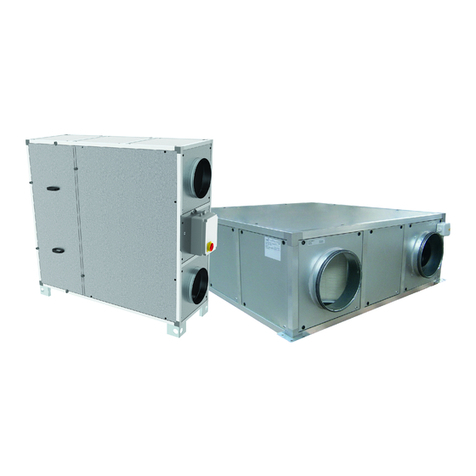
UTEK
UTEK DUO-EC H e V GUIDE FOR INSTALLATION, USE AND MAINTENANCE

Home Decorators Collection
Home Decorators Collection YG583-BN Use and care guide
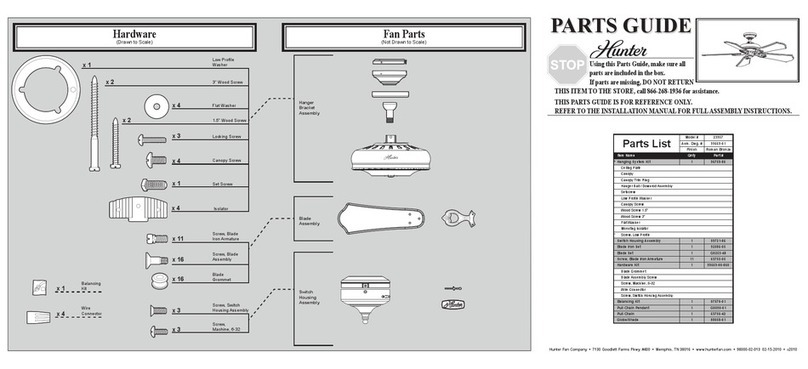
Hunter
Hunter 23957 Parts guide
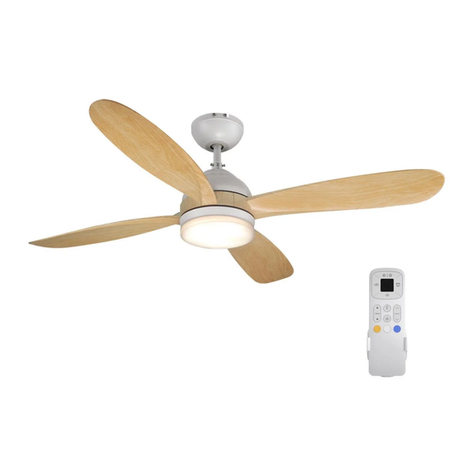
Inspire
Inspire Calpe Assembly, Use, Maintenance Manual

Peiying
Peiying URZ0484 quick start guide
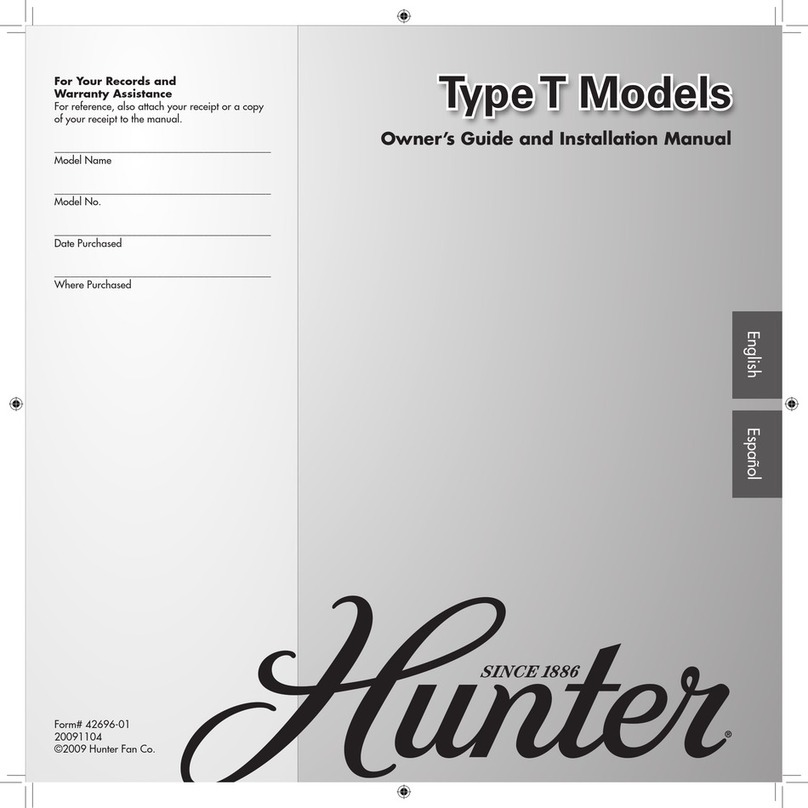
Hunter
Hunter 42696-01 owner's guide
